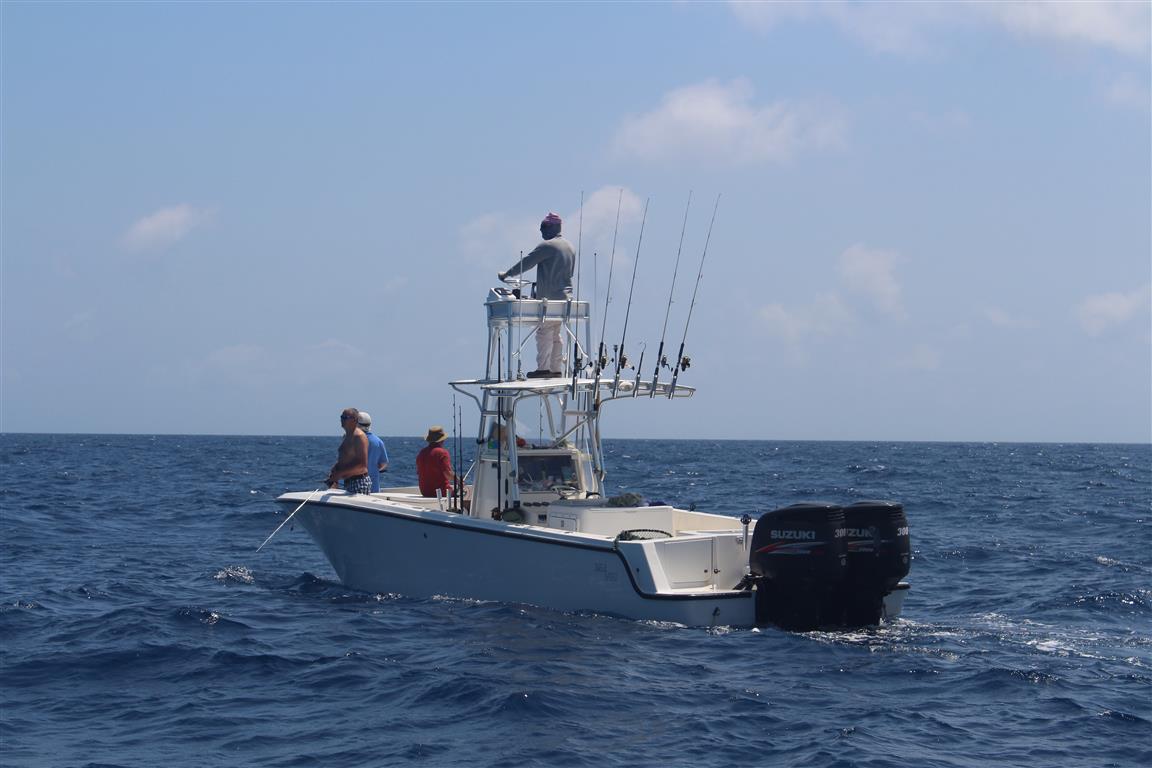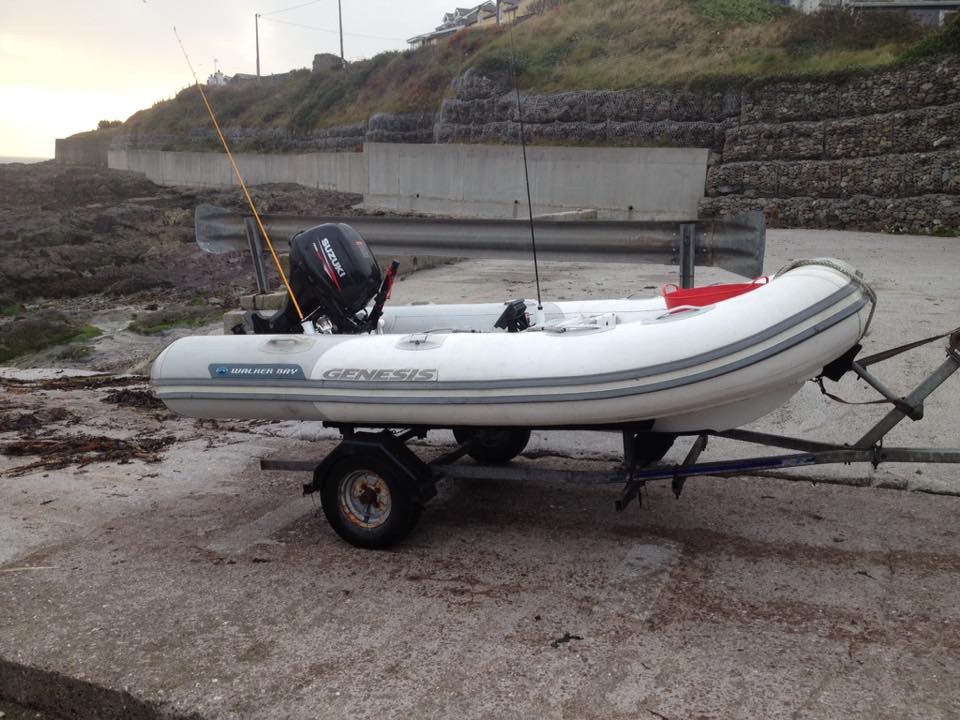* The Warrior 175 – Long Term Boat Review

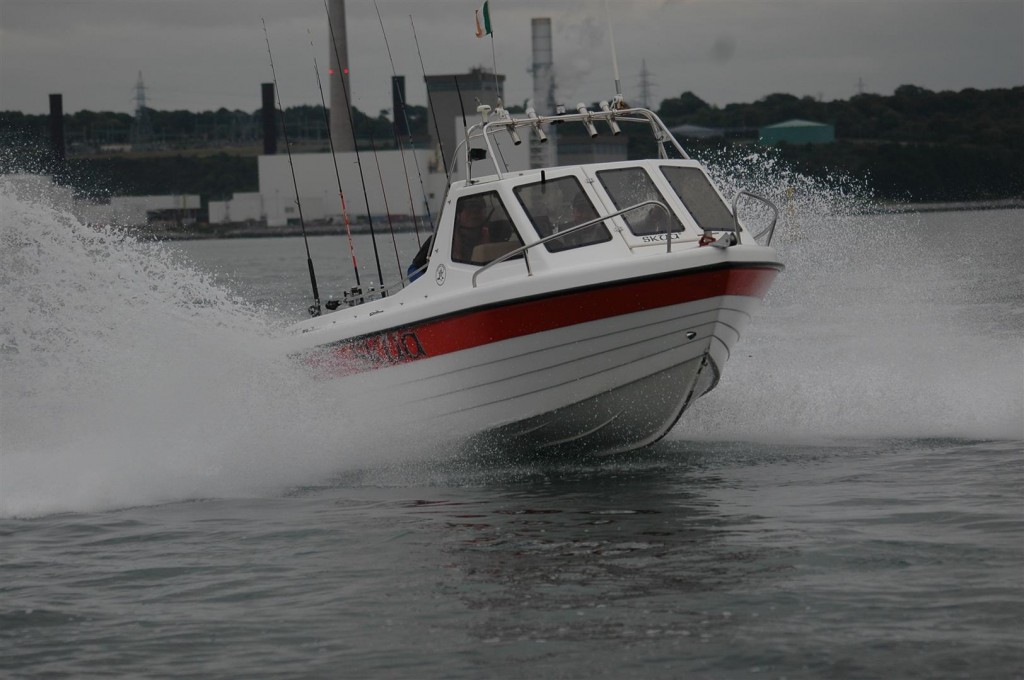
Warrior 175 -–The Review (Long Term)
Note: When writing a long term review of any product it is possible to get caught up in “my boat is the best” style of review. Not many of us would admit to having the wrong boat! I have tried to avoid this adulation or castigation as best as I can. You the reader must remember – The boat you own is a result of compromise: It is the best craft you can have based on your requirements, your situation, your budget and your dreams!
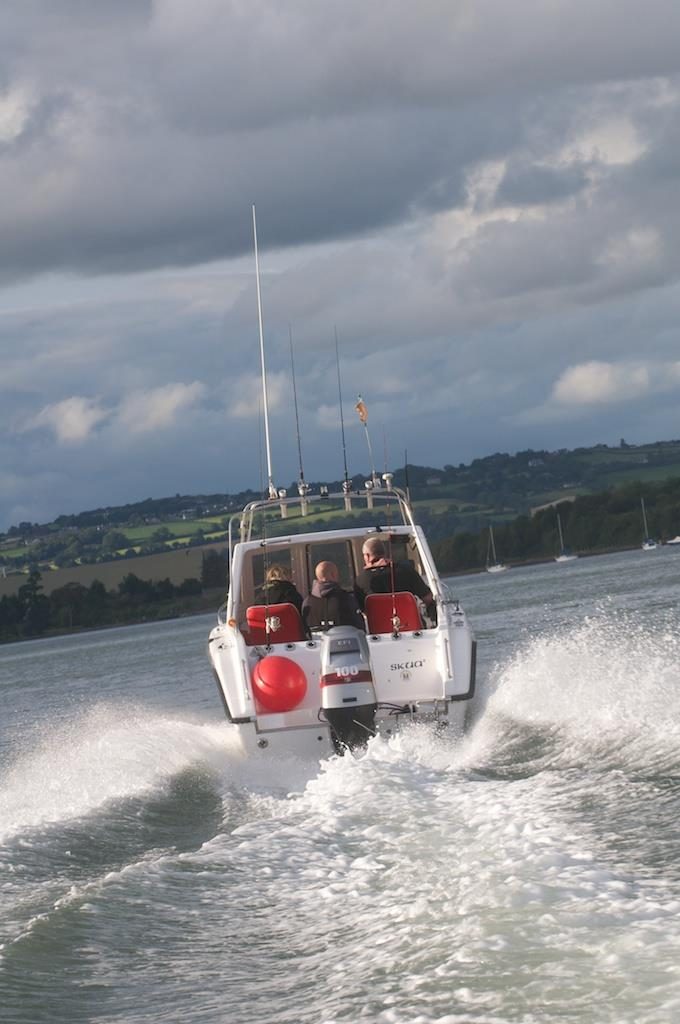
Let’s talk Warrior 175 – Let’s take my situation – What do I want from my boat? I have always been a “small boat” angler. I have always launched and retrieved. I have always towed my boat from home base, where I keep my boat. I do not leave my boat afloat on a marina or mooring other than occasionally on trips. I use my boat almost exclusively for fishing, very few family trips of any significance here. I do not sleep on board. My fishing can be inshore in a few inches of water or it can be up to 50 miles on rare occasions. It is usually somewhere in between. Wrecks interest me but to be fair I am prepared to chase any species for the craic. Usually there would be two or three of us on board. Occasionally I launch and fish single handed. All my launching is done from slipways. Some can be fairly green at varying stages during the year and at different stage of tides. I like a turn of pace in my boat.
My current boat is a Warrior 175. My previous boat was a Warrior 175. My boat previous to that was an Orkney Fastliner 19. Previous to that it was an O’Sullivan Skellig 17. I wanted to change from the Orkney. It was under powered. It was a fine sea keeper at slow speed but it was a bone-shaker at best speed in chop. It was a centre console boat and we felt that a cuddy would add more in terms of sea keeping and comfort.
We ordered our first Warrior 175 without ever having seen the boat. We had travelled to the Southampton boat show but the 175 was not ready in time. It eventually made it to London a few months later. Based on what we had seen from photos we ordered the boat and settled in to await its arrival in Ireland.

So, the Warrior 175 is a seventeen and one half foot trailerable angling boat made in Lancashire, UK. The company build a range of small craft you can check out their website here: http://www.warriorboats.co.uk/
The 175 could be described as a day boat. That is a boat designed to travel and fish for a session over a day. It has a decent cuddy not a cabin or wheelhouse. Let’s start from the bow: The anchor locker is a decent size. If you use good quality braided rope you will be able to fit a large amount. Polypropylene will not lay as flat. I hold 220m of rope and a 7kg plough anchor. Access to the anchor well is via a decent sized cuddy hatch. I do not deal with my anchor from the deck. I have no need to.
Inside the cuddy there is good storage both port and starboard. There is open storage at each side and there are two lockers under the seats. I would recommend that you purchase cushions when you spec out your boat (they are usually supplied with a package deal). I manage to store all the necessary items in the lockers – flares, tool kit, Spray dodger, first aid, extinguisher on the Starboard side. Fenders, spare ropes, steering fluid and other bits ‘n’ bobs are in the starboard locker.
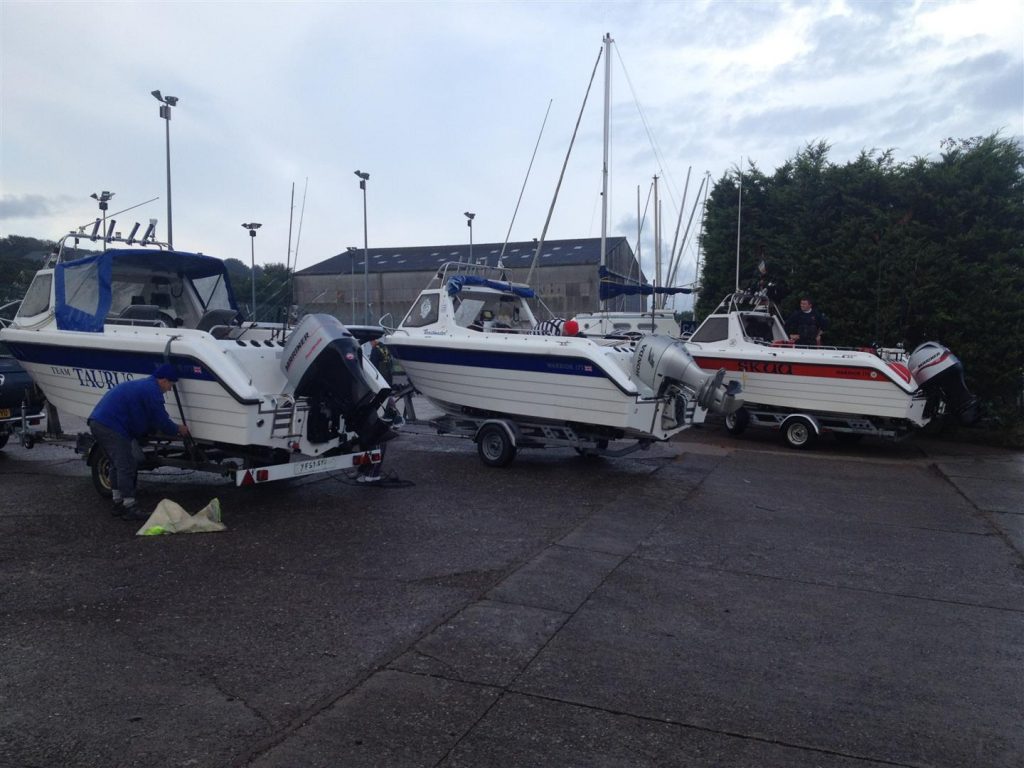
With the console position, the driving position is just outside the cuddy. Visibility is good although very large screens can hamper view out the windscreen. You are not in a wheel house so expect some spray in inclement conditions but we’ll cover more about that later.
The bucket seats are comfortable. I opted for pedestals rather than boxes as it gives more option for leg position while driving. I felt I did not need any more storage. The swivel on seat boxes are a bit notorious. I also adjusted the height of my seat pedestals to allow my feet to be flat on the deck while driving. A simple job. If specifying a new boat have a look at the various seating options and choose accordingly. Always specify two seats.
The deck space on the 175 is impressive. Three will fish comfortably, four at a push and with a bit of discipline in terms of gear and positioning.
Standard & Export
In recent years Warrior boats came up with a lighter and cheaper version of the 175 – The 175 Export. The Export has an identical hull to the Standard 175 the differences are in the floor construction. (For clarity we will refer to the Export version as “The Export” and the Standard 175 as “the 175”). The 175 has a fibreglass floor build as a separate moulding and bonded into the boat. The Export has a glassed-in timber floor. The 175 has a built in fuel tank the Export operates on external tanks. The internal tank is perfect for the towing angler. Each trip I stop at the petrol station and top off the fuel at the pumps. A moored boat might be easier to manage on external tanks; once you are willing to sacrifice the space on deck. The 175 has an under deck “hold” aft of the fuel tank. The Export does not. The 175 has a Treadmaster floor covering. The Export is usually painted.
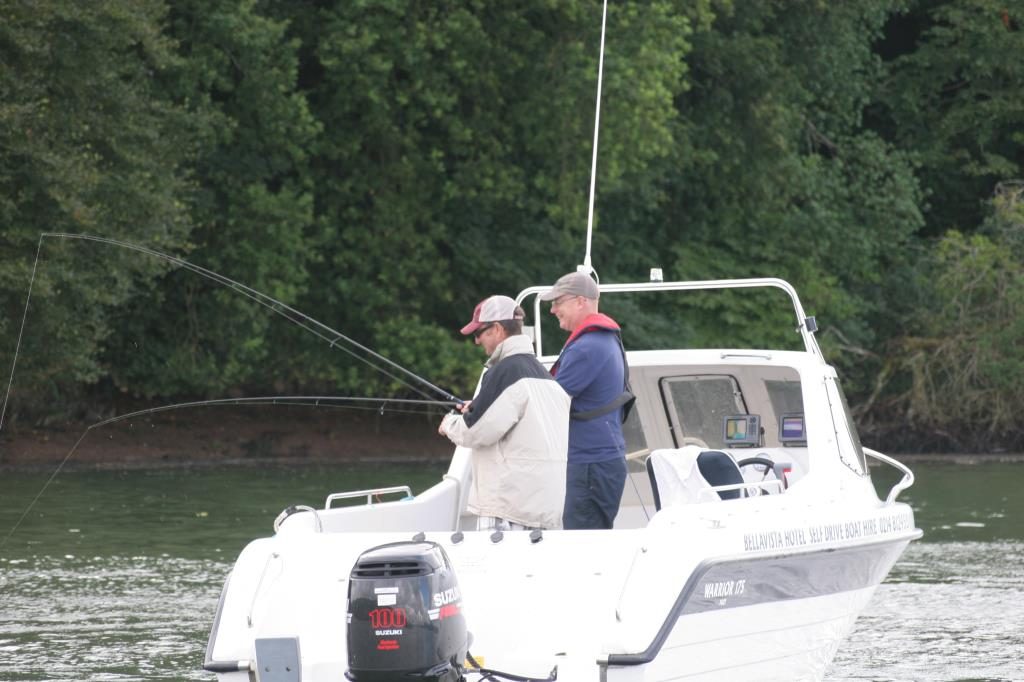
The deck in both versions are self-draining. Self-draining is a most underestimated feature to any boat. Any angler that has wrestled with pumps and pieces of mackerel getting stuck in pumps will tell you; not to mention manual pumping rather than watching water drain out under way.
The fish hold is a strange item. It is not water tight so it will take water from deck washing. It is important to have it plumbed so you can easily empty the hold when you are on dry land. As a fish hold it works well. As it rests below the waterline it is colder than on deck. It is a pain to clean though. I have a box that sits into the hold to limit the amount of blood and guts that lodges in the hold. I have seen guys use it as a hold to store rope and fenders. I have successfully used it as a live bait well from time to time.
The transom is good and high and holds vertical rod holders. You will notice most skippers using the holders to mount a bait board on the rear. Standard fitment is four holders. I have always had eight. The outer transom well holds my anchor lifting buoy and of course entry and exit is via a z-step on the rear. I think the z-step is preferential to a folding ladder. The step also functions as a protector for your transducers. Warrior will supply a bait tray/rod rest bar if requested. I fitted rails to the transom and have lots of breakaway holders dotted about the rails around the boat.
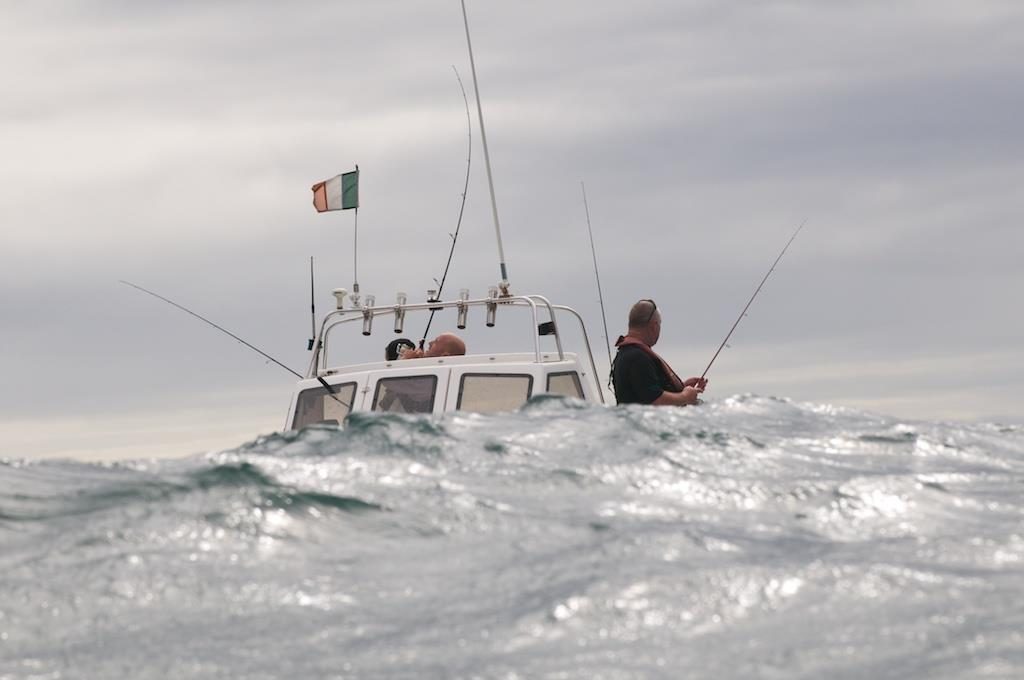
The gunwales are a decent height and are topped with a stainless rail. I have a pair of recessed rod holders fitted at either side. These are more rod holders for fishing rather than travelling. Most skippers fit a few rocket launcher style holders on the bridge rail on the cuddy.
On balance I think the 175 has a better look and feel than the Export. There is less timber in the 175 but of course this comes with a price tag over the Export. Warrior offer options for rear transom seats where anglers need to compromise. The 175 commands more money than the Export both new and second hand.

The Build
Warrior take some pride in their build quality and rightly so; the level of finish in the 175 is very, very good. The hull is still laid up by hand, because it’s the best way. The floor and gunwales are moulded as a unit and are bonded to the hull. The cuddy, gunwale top and transom is moulded as one and bonded to the hull. The result is a hull with very rigid construction. You can feel this under way and it gives you confidence in your craft. The fixtures and fitting are of high quality. The stainless is high grade and there are no sneaky bits to rust over time.
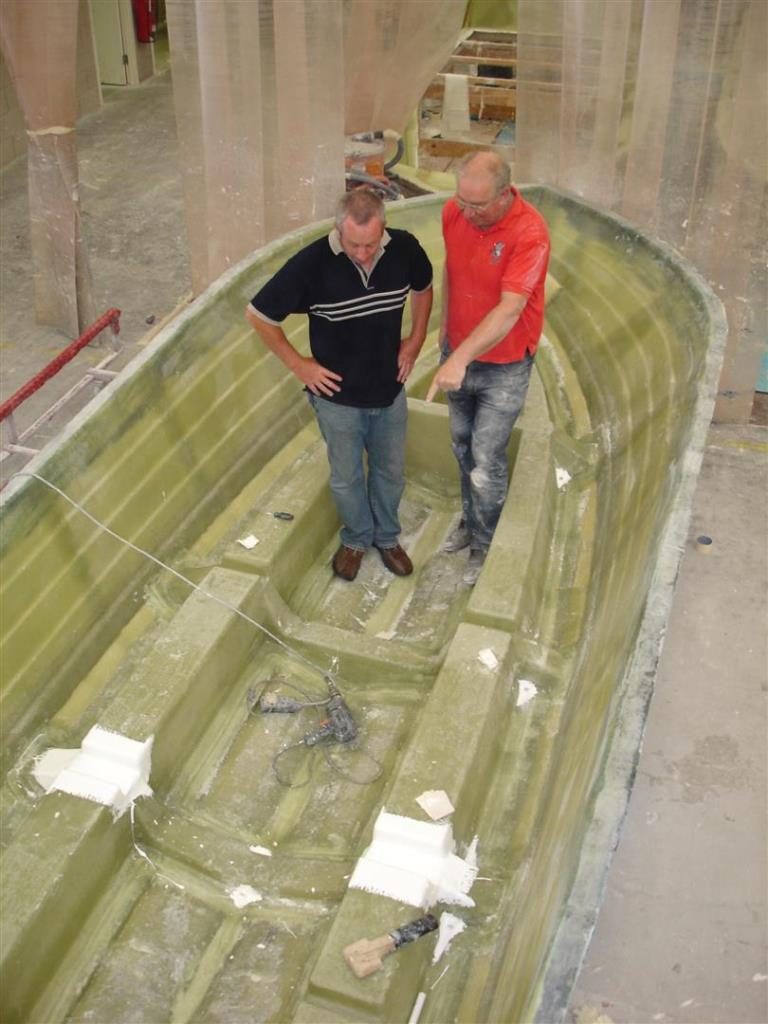
The stainless bridge/radar arch will take rod holders, aerials and radomes as well as LED navigation lights. All wiring comes back to individual switches at the console that are mounted in fibreglass and surrounded by a snazzy bezel. The individual switches can be replaced easily over time – a nicer system than banks of switches. The battery is mounted inside the console. Many skippers opt for a twin battery/split charge system. I have worked off a single battery for years. I used carry a spare battery on board but now I carry a booster pack “just in case”.
Over years of use I do find the annoyance of stress cracks in areas of the gelcoat. The grab handles at the cuddy roof are a typical area. It didn’t happen on my first 175 but it has on my second. It does not hamper performance but it takes from the “look”. I would imagine and hope that Warrior are aware and have reinforced the areas in more recent builds.

Tow, Launching and Retrieving
The 175 is best suited to a roller trailer. I think it’s fair to say that the trailer can be an item that causes grief for skippers more than any other item of boating kit. The driver for trailers is price. To get boat packages at competitive price the trailer tends to suffer. You would expect bracketry to be up to standard. Brakes are a consumable item as are bearings and even your hitch to a point. I have had an Indespension trailer on both my boats. I replaced my trailer some years back. I have had no issues with construction but have replaced a hitch damper. I have the bigger axle and I have not changed wheel bearings in eight years – Quality bearings and quality grease.
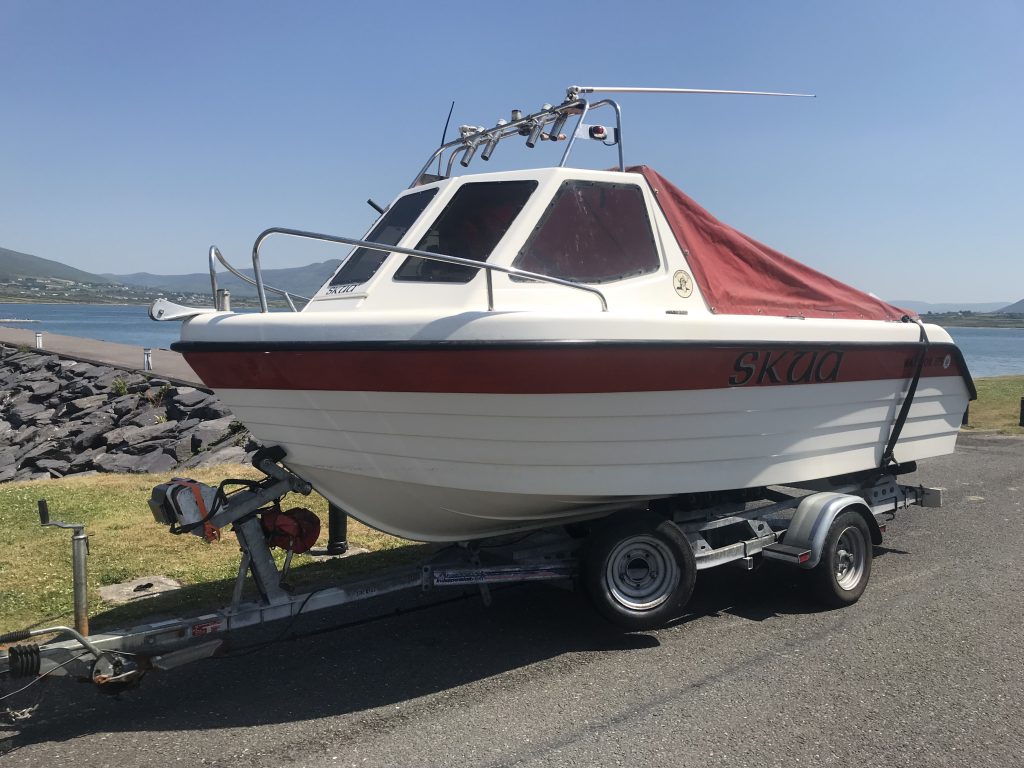
The 175 tows well. You realistically need a larger vehicle for towing, ideally a 4×4. Your situation as regards launching determines your towing vehicle to an extent but be clear in the knowledge that your average family car will struggle with a 175 on the back. I have seen many lads tow with big vans and have no issues. The best route is with a 4×4 or the bigger more powerful AWD SUVs. The 175 launches easily. Once your rollers are running free the boat will slide off the trailer with a shove or a little shunt of the towing vehicle. Retrieving is easy. Once the bow touches down on the rear cradle the boat will winch on. A consistently crooked boat can mean rollers that have slightly moved. The 175 is a boat that looks very well on a trailer.
I have an electric winch fitted to my trailer. It is a gift for retrieving, especially single handed retrieving. There are choices to the way you power your winch and your most common launch site will guide you as to how to power your winch. I power via Anderson Plugs via the vehicle battery. It works a treat for me as I exclusively launch from slipways.

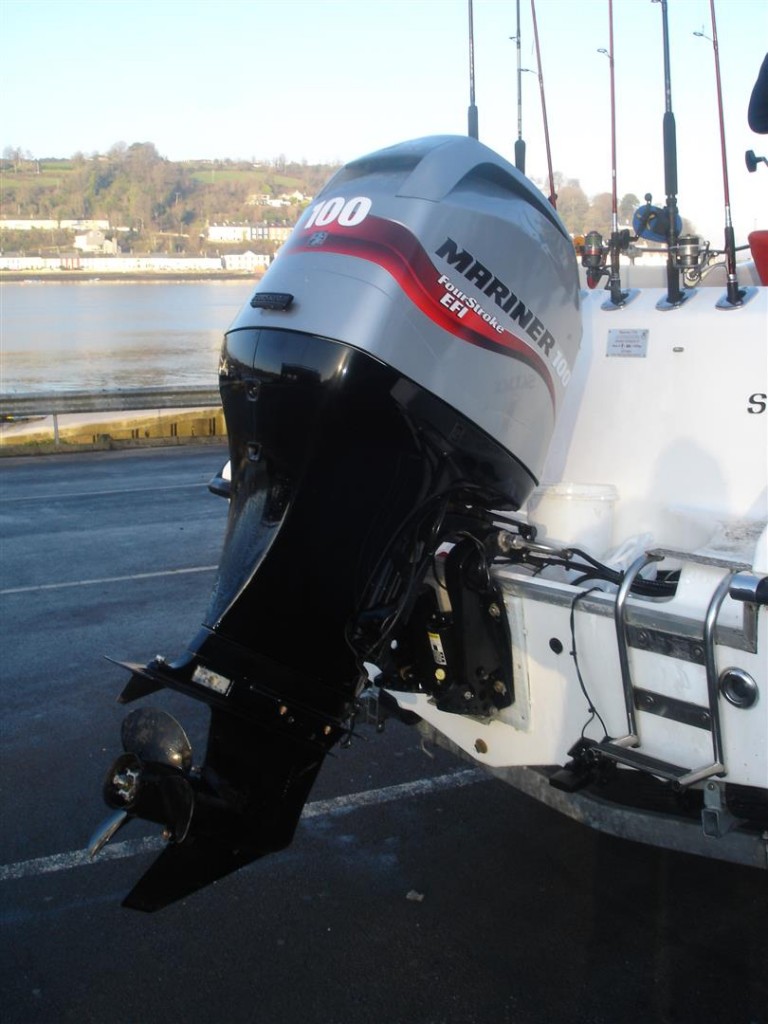
PowerPlant
When the 175 was launched it was said that a 75hp motor would do fine and a 90/100 was optimal. Times have changed somewhat and engines have become lighter. Now 100hp would be considered minimum and 140/150hp has become popular.
My 175 has a Mariner F100 fitted. Originally it came with a 16 pitch propeller. This prop allowed the engine to over rev in certain conditions so in conjunction with Warrior and EP Barrus we changed to a 17 pitch. It has been a match made in heaven! Skua will do a top speed of 33.5 knots in perfect conditions revving to around 5500 – 5600.
If I was speccing a new boat would I run with a 150hp motor? I reckon I would. I would have to think long and hard about what make and model but I think that the extra oomph would be welcome. Remember a 50% increase in power will not yield a 50% increase in speed. Many say that the engine is “less worked” at cruising speeds. I reckon if I have the speed I will use it!

On The Water
The 175 at rest in the water will sit a bit bow down. The newer hulls are modified to give more lift to the bow at rest. It can be tricky to notice the difference between hulls but when you see them together side by side it is very noticeable.
At rest when moored there can be the slightest list to starboard due to the weight distribution. You will notice this looking at the stern scuppers. Many will combat this with simple weight distribution of equipment.
The 175 is a heavy small boat. It is this weight combined with the hull design that gives the 175 its performance. I can only describe it as a bully boy of a hull. In short chop the boat will maintain speeds that would shock an Orkney owner. The rigidity of the hull allows the chines to throw water away from the boat in huge quantities.
With my 100hp motor my SKUA makes 33.5knts (38.5mph) in the best of conditions. It will drive to 29-30knts in normal operation and will cruise happily and comfortably at 22-24knts. The hull responds very well to engine trim; in fact, it is a necessity to have the boat well-trimmed in order to get the best from the package. I tend to raise the motor by very small increments until I can feel some porpoising and then I will drop the trim back down until stability is achieved. The 175 does not porpoise unless it is not correctly trimmed.
Are trim tabs a benefit? I have been on 175’s with tabs and I cannot say they added anything major to the boat. Certainly tabs would be handy for correcting list due to weight distribution, say you run on your own a lot. Other than that, maybe tabs offer an advantage on the larger horsepower motors. I have never felt my boat to be at a loss for the want of tabs and I would wonder what effect the drag would have on top end speed unless I had a bigger motor..
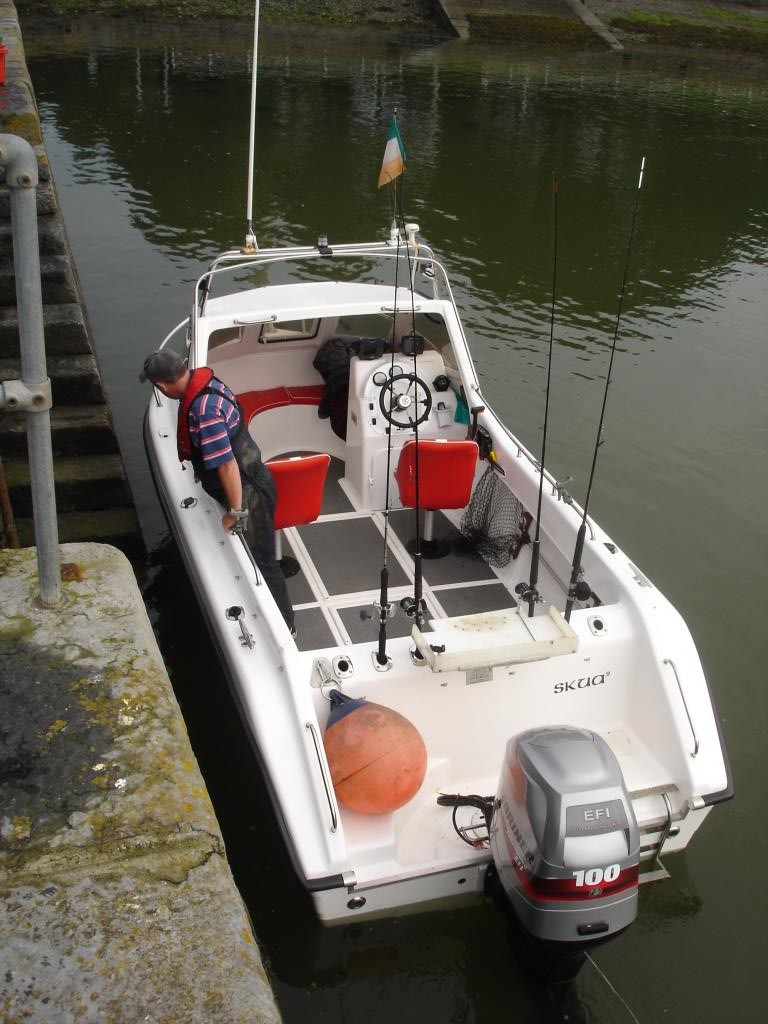
Is the 175 a wet boat? The simple answer is – mine isn’t depending on conditions! The 175 is a cuddy boat not a cabin boat so you have to consider the situation when fishing in rough conditions. Generally, experience has me staying on shore when the conditions are bad. We are lucky enough to have the expanse of sheltered water that is Cork Harbour to play in when conditions are bad. However, there are times, I’m thinking competition fishing, where you will fish in conditions that are less than ideal.
The 175 hull needs to be at certain speed to get it working. If conditions are horrid and you cannot make enough speed to get the hull working, then there is a good chance you’ll take water over the cuddy or around the side of the cuddy. If you are travelling across the chop there really is little you can do if you cannot make enough speed to throw that water behind the moving boat. Often it is more of what speed the driver can stand rather than the boat. It is in cases like that that one need to have a Spray Dodger on board. Once the dodger is up you are now sitting inside the extended cuddy and you are dry and somewhat insulated from the goings on outside. I modified my dodger so that it attaches to the bar with Velcro and so when not in use it is stowed in the cuddy lockers. I do not use the dodger regularly. I do carry decent wet gear and sometime I decide to “just drive on” rather than putting up the dodger. I obviously like the open air!
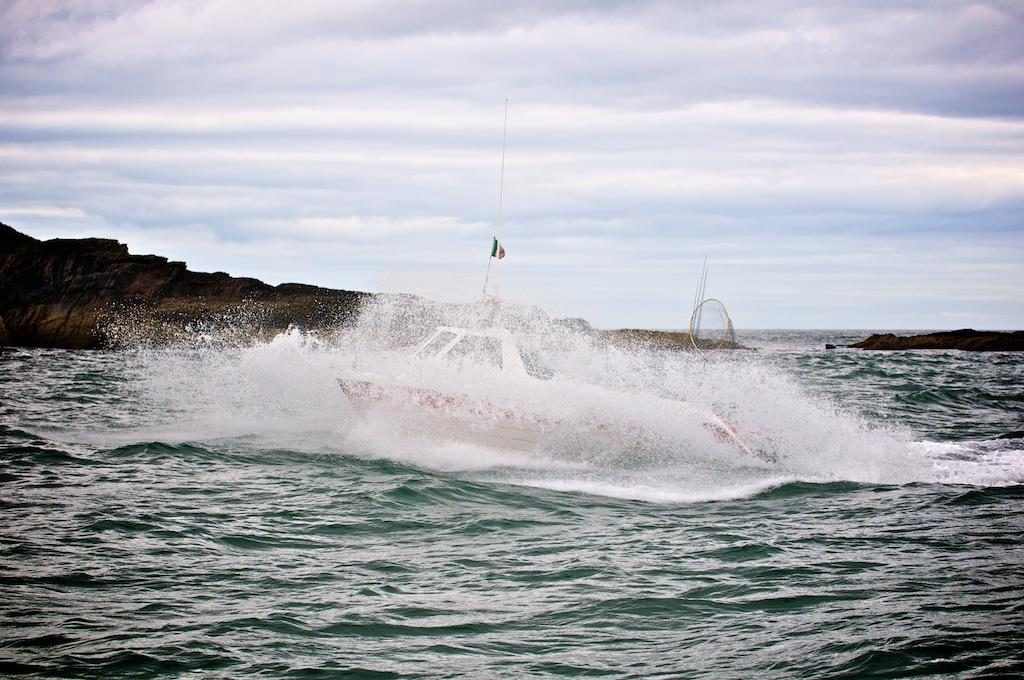
I have seen a few owners fitting a polycarbonate screen on the radar arch. This modification is carried out to mitigate against water coming over the cuddy while moving at slow speeds in lumpy conditions –- moving between marks is a typical scenario. It seems like a worthwhile mod if you are getting the water down the neck too often!
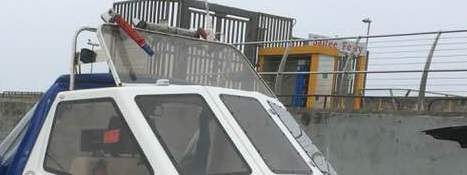
The 175 is a well behaved hull in both following sea and taking the waves head on. I have tested the boat in some trying conditions. Coming off waves when travelling at speed and taking the next wave “on the shoulder” is the only time I have really tested the hull. To be fair I don’t think any boat likes such a position. I have never put myself in a position where I was getting nervous. That is a testament to the performance of the boat. I have been out in conditions that I wished I was safely ashore as quickly as possible.
Does the 175 need a wiper?
In short, no. Keep your screen clean and wax your windows with some high quality wax. I use either Boat Buddy or Turtlewax Professional. The wax will last the all day on a rough day and longer on a clam one. Just try not to apply wax over dried on salt. Wash off salt before waxing.
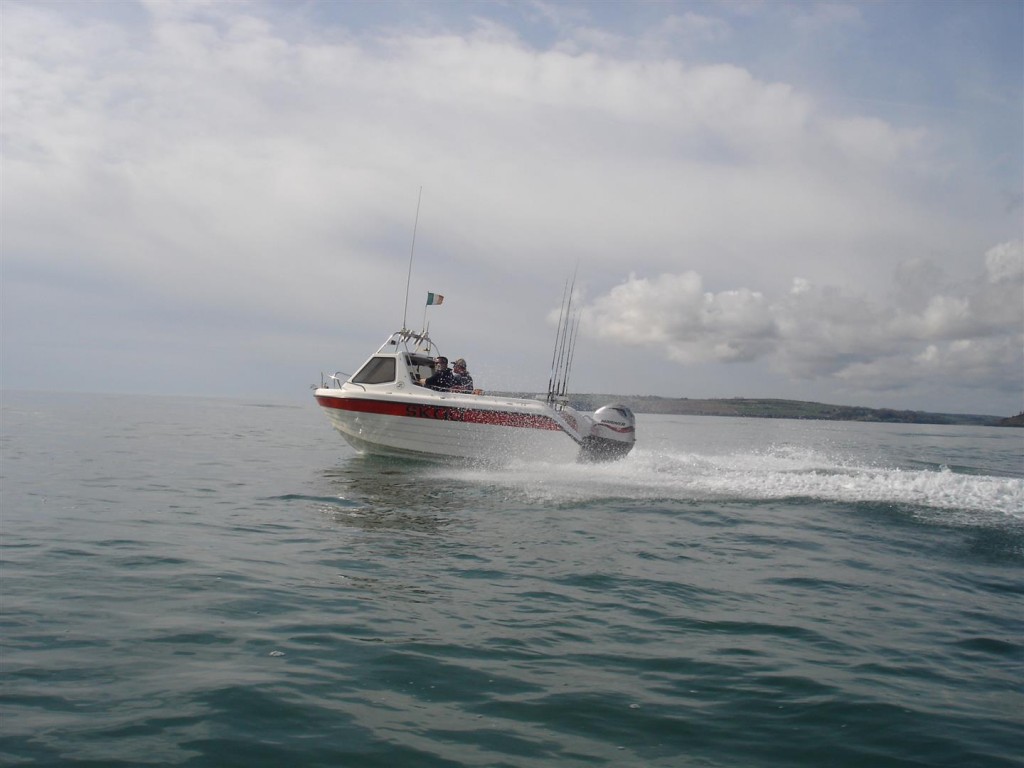
The Warrior / Raider Debate
For many years I read the debate online as to which is the better boat. The fact remains that the Raider and the Warrior are two different design results of a similar set of specifications. The Raider ticks some boxes and the Warrior ticks others. My line that – “Inside every Raider owner is a Warrior owner trying to get out” used go down a blast! Of course you will be aware that Warrior are now building the Raider 18. The boat has benefited from the build quality that is Warrior’s trade mark. It still ticks some boxes for some anglers. At this stage I would not be adverse to owning one but I still feel the 175 has a small edge when it come to MY requirements.
The Fuel Tank Issue
The inner hull of the 175 is a sealed space. It can be very hard to ensure that that space is kept bone dry. Even condensation forming on the heating and cooling fuel tank can, over time, cause issues for the aluminium fuel tank. My boat is a 2006 hull. A couple of years back I heard about some owners having issues with their tanks. I lifted the fuel tank floor panel and immediately could see a mix of fuel and water trapped on the top of the tank. The tank displayed the typical attributes of aluminium pitting due to contact with salt water. The water had lodged under the tank in some foam that had been added (unnecessarily).
Warrior were helpful from the outset and they have created a modified fitting kit for the boat. I will not call the job easy but it is a job that can be undertaken by the relatively mechanically competent skipper. I did the job myself. You will need to watch the position of the fuel filler and if the filler is in a different position than your own you may have to replace the fuel filler/vent hoses. Other than that it is a matter of attention to detail and plenty of quality sealer when you replace the floor panel.
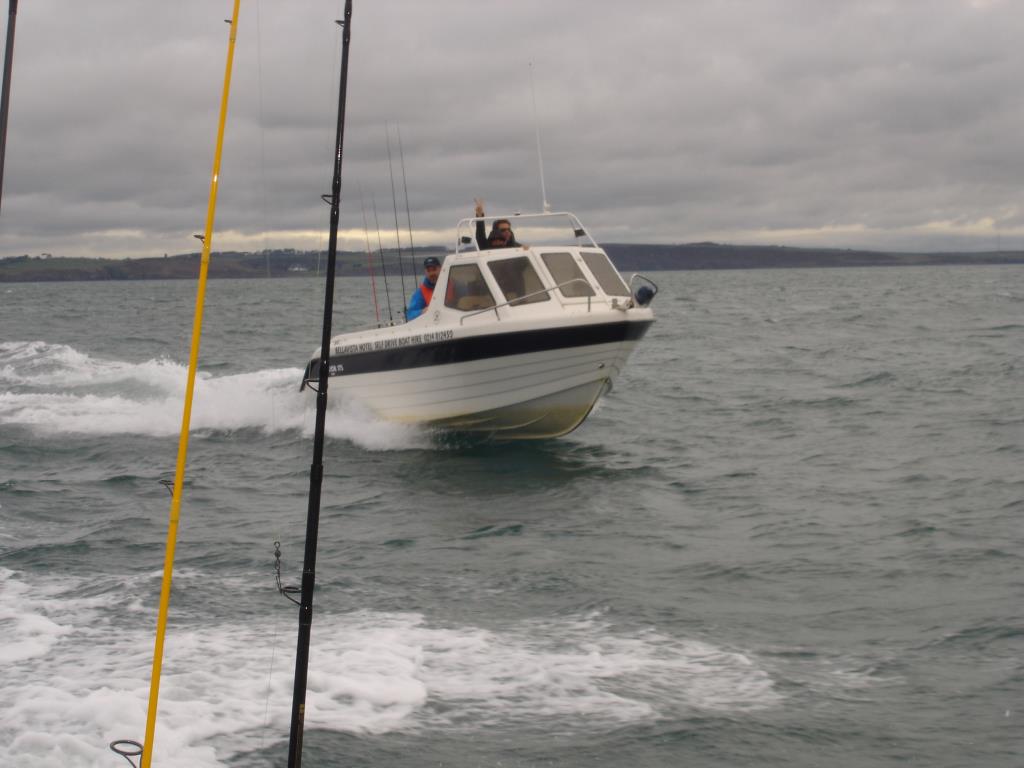
So if you are looking at a second hand 175 you need to determine the fuel tank situation. Either way you should at least remove the transom well hatch and check the inside of the hull. If there is any fluid present here, you should really lift the floor panel just for a fuel tank inspection. You surely should check inside the transom hatch every other year.
Keeping Ship shape
There is no substitute for cleanliness. Your 175 will benefit from regular washing and waxing. I use a “Delta Force 2000” power washer detergent. It contains wax. It brings the hull up very well. A few times a year I will wax the whole boat using Boat Buddy Premium Wax. Waxing the inside makes for easier cleaning of fish bit and the usual crud that we wreck our lovely clean boats with every time we go fishing!
Keep an eye on pop rivets. Replace them before they wear and fall out, especially the floor hatch cover and anchor well doors and the clips for the trailing cover.
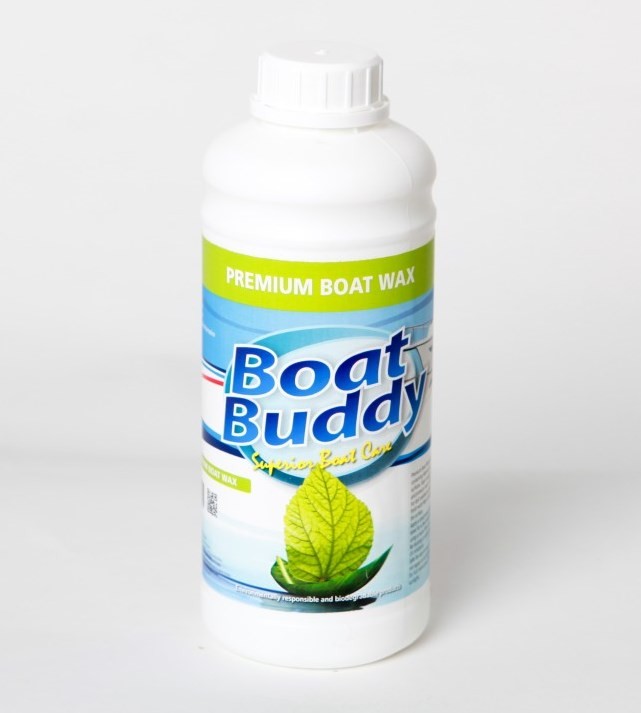
As you boat gets older you will notice that the windows will begin to “fog up”. More often than not this will be UV and no amount of polishing will bring the windows back. You can get a window kit from Warrior. Warrior will supply seals and sealer as well as new bolts in their kit. Of course you can cut you own windows from a half-sheet of polycarbonate using your own windows as a pattern.
The Executive Summary
In terms of build quality, the Warrior remains ahead of its competitors. In terms of performance the 175 is still ahead of comparable boats. This is reflected by the high price commanded by good second hand Warriors of all sizes.
No boat will be exactly everything that a skipper ideally wants. All boats are a compromise of sorts depending on what the skipper wants to achieve. For my situation, a towing skipper that wants a fishing machine, the 175 ticks the most boxes. For me there are few cons and lots of pros. I would change my boat tomorrow if I thought that there was a better craft out there to suit my needs. I have looked and I have not found a better vessel. “It’s the WRC of angling boats” is something I often say — most land lubbers “get it”.
Over the years I have taken many anglers who are prospective customers out in my 175. I have given many their first taste of 175 capabilities and performance. I remember taking two local lads out one day “for a spin” because they fancied a trial. Within a month they were both 175 owners. It’s a simple as that really. The 175 impresses. You will find that about 175 owners, they will gladly give a prospective customer a run out. I’m here in Cork!







